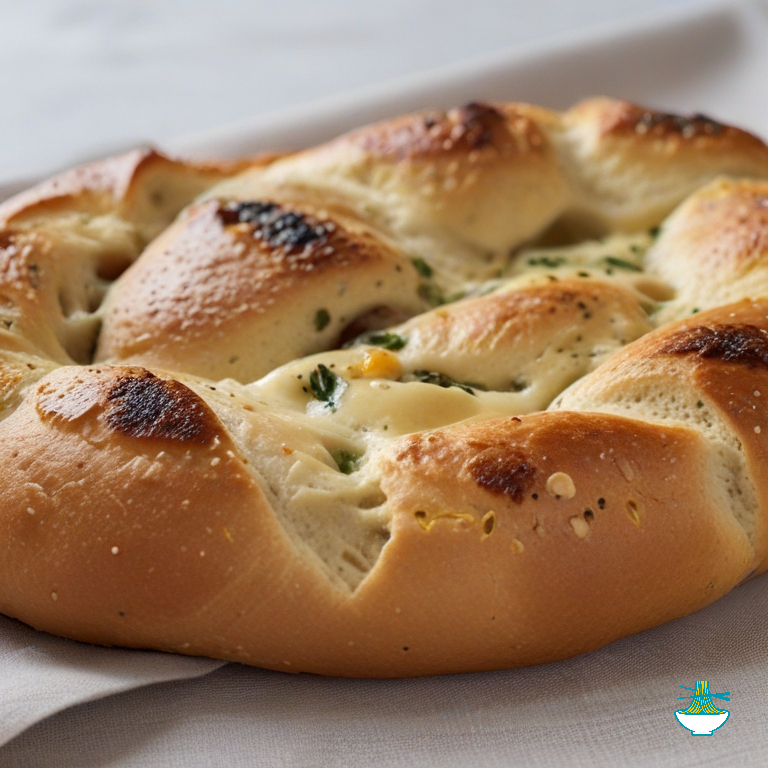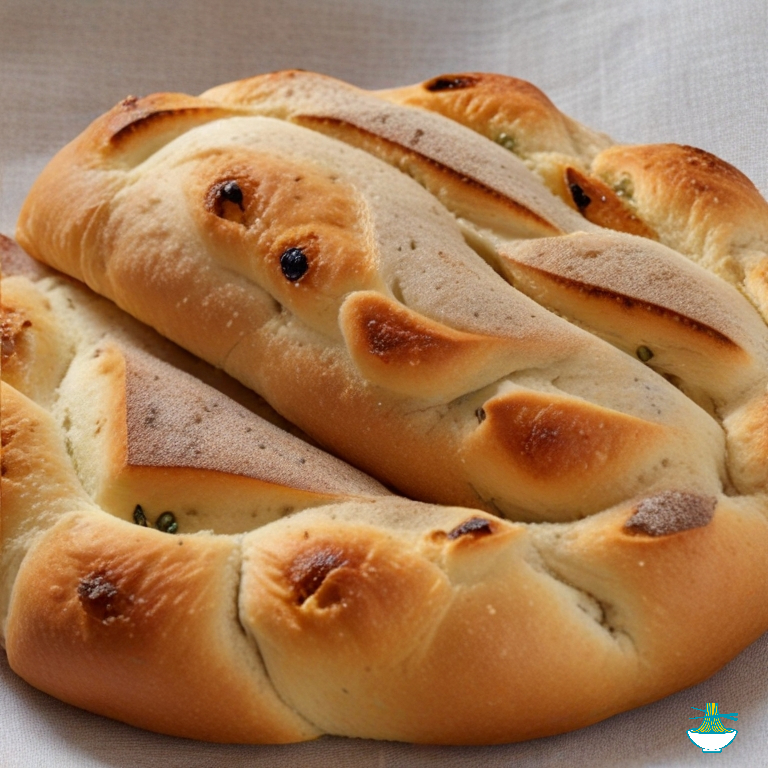Transport yourself to the sun-kissed landscapes of Provence with our authentic recipe for France's beloved fougasse bread. A quintessential staple of Provencal cuisine, fougasse embodies the rustic charm and flavors of the Mediterranean region. This artisanal bread, reminiscent of a leaf or an ear of wheat, boasts a golden crust and a soft, airy interior, perfect for tearing and sharing with loved ones. Learn the secrets of crafting this traditional delight, infused with fragrant olive oil, aromatic herbs, and perhaps a sprinkle of sea salt. Whether enjoyed on its own, dipped in flavorful oils, or paired with local cheeses and wines, fougasse promises to elevate any meal with its irresistible taste of Provence. Unlock the essence of French culinary heritage and indulge in the sensory delights of homemade fougasse.
Ingredients:
- 4 duck legs, preferably Moulard or Pekin duck
- 4 cups duck fat (or substitute with a mixture of duck fat and vegetable oil)
- 4 cloves of garlic, peeled and lightly crushed
- 4 sprigs of fresh thyme
- 2 bay leaves
- Coarse sea salt
- Freshly ground black pepper

Instructions:
1- Prepare the Duck Legs: Rinse the duck legs under cold water and pat them dry thoroughly with paper towels. Score the skin of each leg with a sharp knife in a crosshatch pattern, being careful not to cut too deeply into the meat.
2- Season the Duck Legs: Season the duck legs generously with coarse sea salt and freshly ground black pepper. Place them in a shallow dish or tray, cover with plastic wrap, and refrigerate for at least 12 hours or overnight to allow the flavors to develop.
3- Preheat the Oven: Preheat your oven to 225°F (110°C).
4- Render the Fat: In a heavy-bottomed saucepan or Dutch oven, melt the duck fat over low heat. Add the garlic cloves, thyme sprigs, and bay leaves, and let them infuse the fat gently for a few minutes.
5- Cook the Duck Legs: Once the fat is infused, gently place the seasoned duck legs into the pot, ensuring they are completely submerged in the fat. If necessary, add more fat or oil to cover the duck legs completely. Bring the fat to a very gentle simmer, then cover the pot and transfer it to the preheated oven.
6- Slow Cook: Allow the duck legs to cook slowly in the oven for about 2 1/2 to 3 hours, or until the meat is tender and almost falling off the bone.
7- Crisp the Skin (Optional): Once the duck legs are cooked, you can crisp up the skin by placing them under a broiler for a few minutes or by pan-searing them in a hot skillet until golden and crispy.
8- Serve: Remove the duck legs from the fat and let them drain on a paper towel-lined plate briefly before serving. Serve the duck confit hot, accompanied by your choice of sides such as roasted potatoes, sautéed greens, or a simple salad dressed with a tangy vinaigrette.
Enjoy the rich, succulent flavors of this classic French dish, a true symbol of culinary indulgence and comfort. Bon appétit!
Nutritional Values :
Duck Legs (1 leg, approximately 170g):
- Calories: 350 kcal
- Protein: 26g
- Fat: 27g
- Carbohydrates: 0g
- Fiber: 0g
benefits : Rich in protein, iron, and B vitamins, duck meat provides essential nutrients for muscle growth, energy production, and overall health. It also contains healthy fats, particularly monounsaturated and polyunsaturated fats, which support heart health.
Duck Fat (1 cup, approximately 218g):
- Calories: 1910 kcal
- Protein: 0g
- Fat: 218g
- Carbohydrates: 0g
- Fiber: 0g
benefits : While high in calories and saturated fats, duck fat is prized for its rich flavor and high smoke point, making it suitable for cooking at high temperatures. It adds a deliciously savory depth to dishes and contains some beneficial monounsaturated fats.
Garlic (1 clove, approximately 3g):
- Calories: 4 kcal
- Protein: 0.2g
- Fat: 0g
- Carbohydrates: 1g
- Fiber: 0.1g
benefits : Garlic is renowned for its numerous health benefits, including its anti-inflammatory and immune-boosting properties. It contains sulfur compounds like allicin, which may help lower blood pressure and cholesterol levels, as well as antioxidants that protect against cell damage.
Thyme (1 sprig, approximately 2g):
- Calories: 2 kcal
- Protein: 0.1g
- Fat: 0g
- Carbohydrates: 0.5g
- Fiber: 0.3g
benefits : Thyme is a good source of vitamins C and K, as well as antioxidants like flavonoids and phenolic compounds. It has antimicrobial properties and may aid digestion, support respiratory health, and promote healthy skin.
Bay Leaves (1 leaf, approximately 1.7g):
- Calories: 3 kcal
- Protein: 0.1g
- Fat: 0g
- Carbohydrates: 0.7g
- Fiber: 0.4g
benefits : Bay leaves contain essential oils and compounds like eugenol and cineole, which have anti-inflammatory, antibacterial, and antioxidant properties. They may help improve digestion, reduce inflammation, and support overall wellness when consumed as part of a balanced diet.
Please note that these values are approximate and can vary based on factors such as cooking methods, specific brands/products used, and portion sizes.


Comments